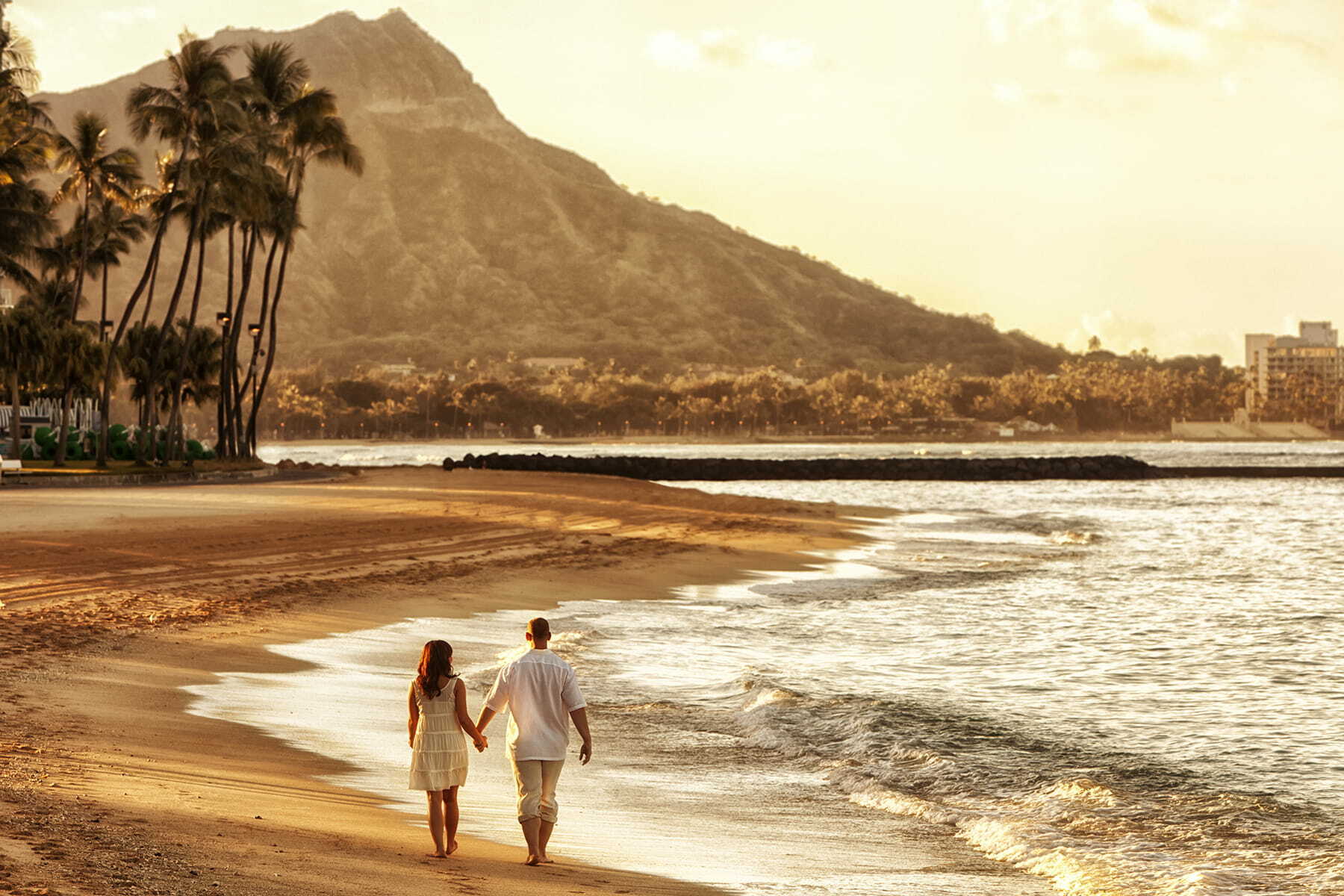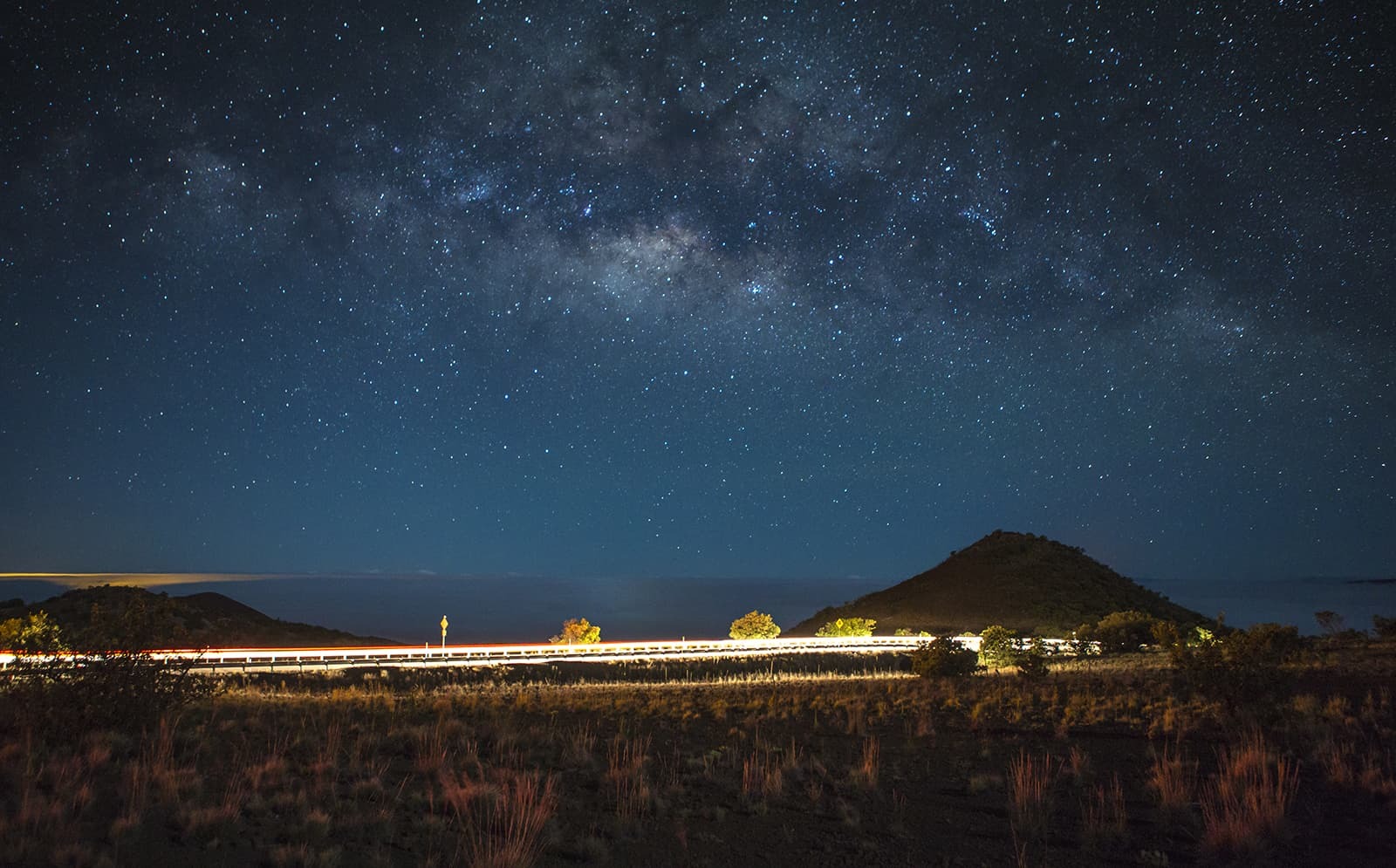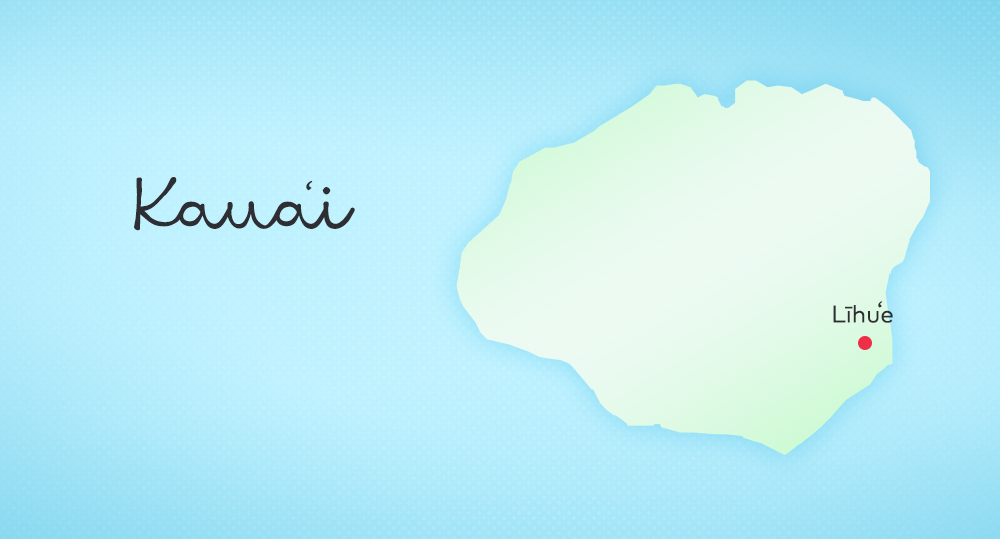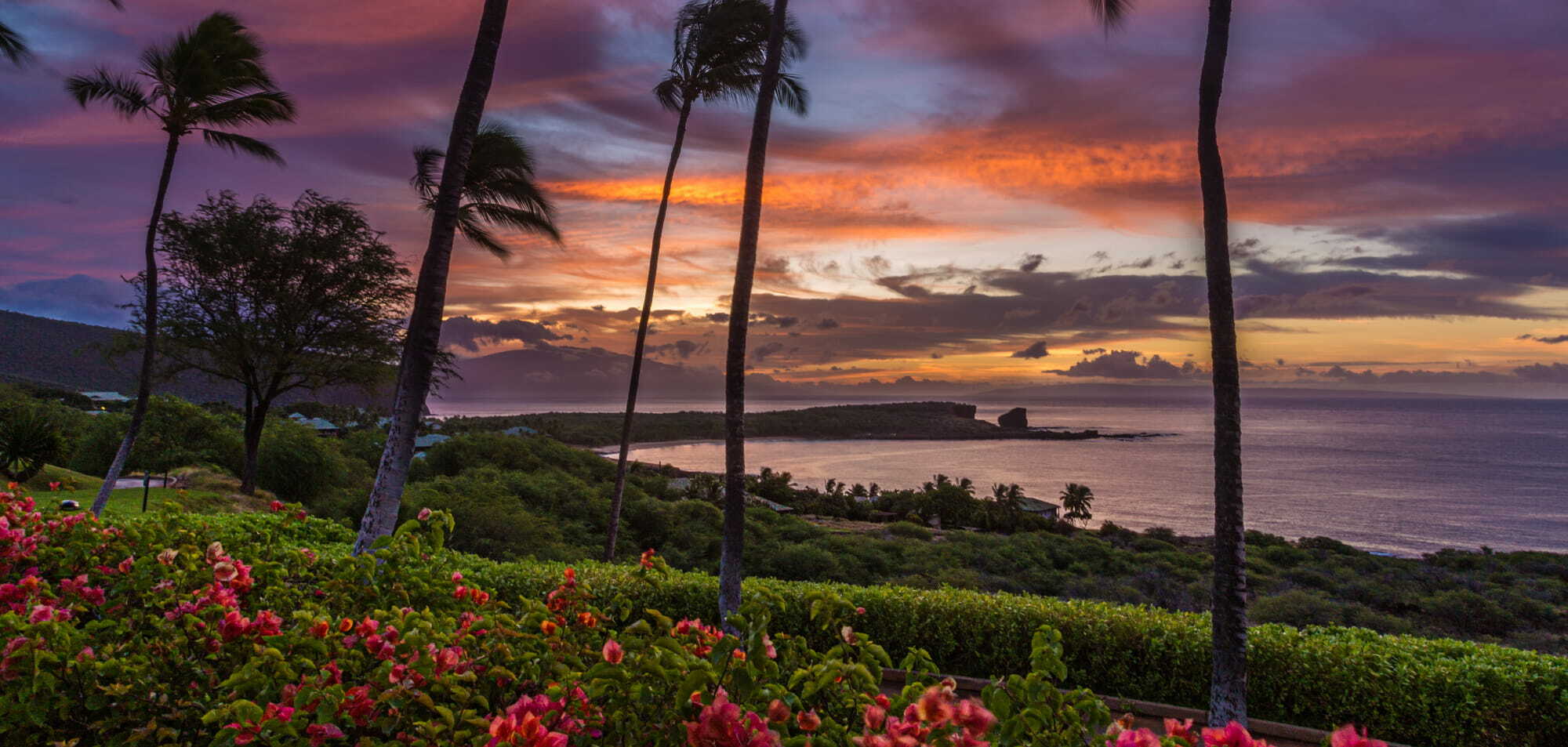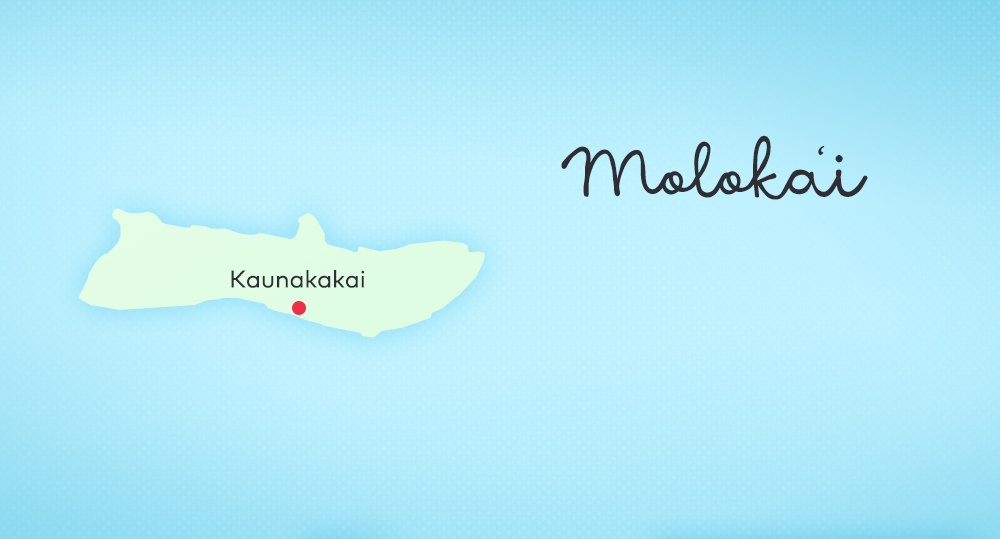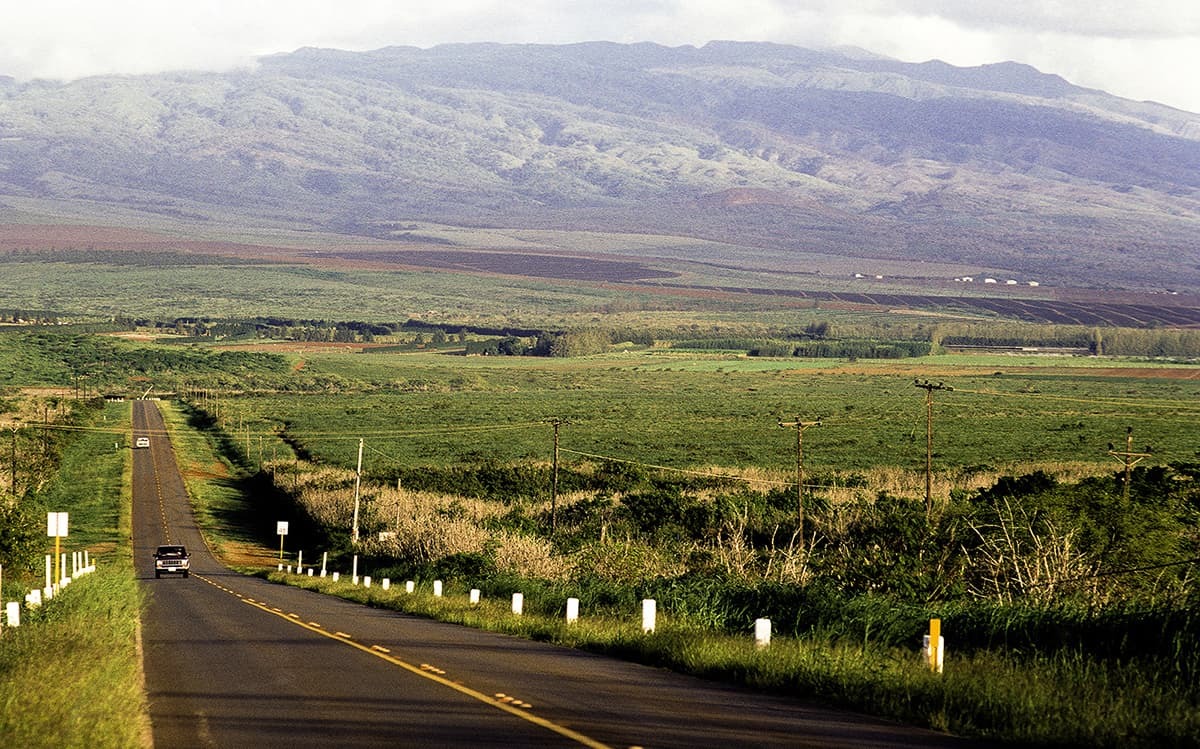Oahu
Oahu is Hawaii's most populated island a.k.a. "The Gathering Place."
How many Hawaiian Islands are there? Total there are 137 islands in the Hawaii chain. Hawaii is typically recognized by its eight main islands, seven of eight which are inhabited: Oahu, Maui, Hawaii, Kauai, Molokai, Lanai, Niihau, and Kahoolawe.
When moving to Hawaii, you may be wondering which island to live on. Not only do each of the islands have different geographical features, but they also have different amenities, local governing bodies, histories, cultures, and costs of living. Discover all seven inhabitable Hawaiian Islands before deciding which island fits your lifestyle.
Home to nearly one million people, Oahu has many neighborhoods, majestic landscapes, and nearly all the amenities of a city on the Mainland U.S.A. Oahu has the world-famous North Shore with its legendary surfing sports as well as Hanauma Bay, Diamond Head, military installations, and the main campus of the University of Hawaii.
The number of Single-family home sales on Oahu are the highest of all the islands, and the housing market is incredibly competitive. With thousands of condominiums available, there are lower-cost housing options for those entering the housing market. If you want to experience paradise with the expected amenities, Oahu might be the island for you.
Like the other islands, Oahu is believed to have been first settled by Tahitians around 300 CE, although the exact dates are unknown. In 1795, Kamehameha I conquered Oahu after the bloody battle of Nuuanu, uniting the Hawaiian Islands.
In 1845, the royal capital moved from Lahaina, on Maui, to Honolulu, which remains the state capital. Iolani Palace was built, which is still the only palace in the United States. With Captain Cook’s arrival in the Hawaiian Islands and an increase in sugar and pineapple plantations, the monarchy was increasingly dominated by foreign interests. Queen Liliuokalani was overthrown in 1893, and the island chain was annexed in 1898 by the United States.
Another pivotal historical event that occurred on Oahu was the invasion on Pearl Harbor by Japanese forces during World War II.
If you define excellent weather as sunny and warm, then Oahu has your ideal weather conditions. Honolulu and Waikiki average around 80 degrees year-round with only 20 to 40 inches of rainfall. Along the Waianae coast, there is less rain, and temperatures can be a little higher. On the windward side or East coast, it tends to rain more; however, one minute it may be raining and the next minute there may be an astounding rainbow.
The County of Honolulu governs the island of Oahu. While traffic on Oahu is considered one of the worst in the United States, the island boasts a robust infrastructure. The Bus offers service around the island, and the Skyline (Honolulu's Rail System) promises to offer convenient transportation from the West side of the island to “town” or Honolulu. Water, sewage, and trash pick up are offered in every area of Oahu, with only some of the most remote locations having cesspools. Parks are plentiful on Oahu, including dog parks, bike paths, and botanical gardens.
Like the other islands, Oahu is also considered a safe place in comparison to other cities on the Mainland. According to the Honolulu Police Department's Annual Report in 2022, there was an overall 14.3% decrease in crime compared to 2021. In fact, 2022 marked the lowest reported crime rates in the past five years. Robbery, burglary, and theft saw a decline in 2022, however, there was a slight uptick in traffic fatalities. Overall, residents of Oahu can feel safe walking most streets at night, but they should be vigilant in certain areas and neighborhoods and always take precautions to secure belongings.
The second largest and third most-populated island, Maui was once home to sugar cane and pineapple plantations but has now evolved into an ever-developing tourist-attracting island with a lot to do and beautiful beaches and scenery. The housing market on Maui was hot in 2022, but has recently cooled off – with little inventory and single-family homes priced higher than Oahu.
Polynesians from Tahiti and the Marquesas islands first arrived on Maui perhaps around 400 A.D., although there is no definitive date. The Polynesian settlers followed a kupu system, like that on most of the islands, and became farmers and fishermen.
In the early years, there were three kingdoms on Maui: Lahaina, Hana, and Wailuku. Many wars and conquests occurred over the years, with one of the final battles being Kamehameha the Great conquering Maui in 1795 to unite the islands.
After English explorers mapped the Hawaiian Islands, sharing the news of the rich lands of Hawaii with the world, Maui became home to whalers and Christian missionaries. Later sugar plantations consumed life on Maui for nearly a century, with the last Alexander & Baldwin 36,000-acre sugar plantation closing in 2016.
The weather on Maui varies across the island due to its proximity to coastline, varying elevations, and differing trade winds through the valleys and slopes.
Central Maui, with the towns of Kahului and Wailuku, tend to have warm, steady temperatures throughout the year with dry breezes; sometimes Central Maui is also muggy with rainfall. The leeward side, which includes Kihei, Wailea, Makena, Lahaina, Kaanapali, and Kapalua, is typically dryer with a higher daytime temperature – up to 92 degrees – and the least amount of rainfall. The windward side with Paia, Haiku, Keanae, Hana, and Kipahulu, has heavier rainfall and northeast trade winds. Upcountry Maui includes Makawao, Pukalani, Kula, and the main mountain, Haleakala. With elevations from 1700 to 4500 feet, the temperatures are milder (70s to low 80s) during the day and chillier at night.
Governed by Maui County, which also governs the less-populated islands of Lanai and Molokai, Maui’s infrastructure was originally funded by the sugar and pineapple plantations. The federal government helped to build the county’s infrastructure from 1959 to the mid-1970s, and since the state and county has been in control, Maui residents have continued to desire infrastructure improvements.
While Maui has wastewater, water, roadways, public transit, parks, solid waste, and police and fire infrastructure, much of it was put in place many years ago. The water infrastructure is in poor to fair condition and many of the roadways need repair. The Maui Bus system is operated by a private company, Roberts Hawaii, and has limited commuter service. Maui in Phase 3 of constructing and expanding the Central Maui Landfill.
It's also important to note that Maui is in the process of planning how to rebuild Lahaina after its deadly wildfires.
You may be wondering, is Maui safe? The island welcomes nearly 3 million visitors each year, and it is generally safe for both tourists and residents. Not surprisingly, the ocean environment poses a risk – especially on Maui which has one of the largest waves in the world, Peahi or Jaws. People on Maui should be aware of rogue waves as well as strong currents. The trails, waterfalls, and vast landscapes of Maui are breathtaking, but also pose a risk, as people have been known to become lost. Violent crimes are not common on Maui, but like the other islands, petty theft does occur at times.
Hawaii Island, known most commonly among locals as the Big Island, is the largest geographical island in Hawaii – and in the United States. It is the southeastern-most island and also the newest island with an active volcano that continues to add more land mass to make the Big Island even bigger. Prospective buyers will find that the Big Island has lower home prices with much more land available. However, the varying weather and lack of infrastructure in some areas could be a challenge for the non-adventurous home buyer.
Stories say legendary Polynesian navigator, Hawaiiloa, first discovered Hawaii Island, and this is where the island’s name originates. Other stories say the island is named after the realm of gods and goddesses, Hawaiki.
Near the end of the eighteenth century, Captain James Cook, an English explorer sailed to Hawaii Island and called them the “Sandwich Islands.” After sharing of his “discovery” of the Hawaiian Islands with compatriots, he was later killed on the Big Island at Kealakekua Bay.
The Big Island was the home of Kamehameha the Great, who united most of the Hawaiian Islands in 1795 after several years of war. He renamed the island chain after his native island, Hawaii.
The Big Island has eleven of the world’s thirteen sub-climates, meaning if you want wet, dry, hot, or cold – even snow – you can find it.
Kailua-Kona side is hot, as vog (volcanic emissions of sulfur dioxide and other volcanic gases) from the active volcano, Kīlauea, absorbs the sun’s rays. Also, Kīlauea continues to erupt, causing some housing, which often is priced right, to be at risk of lava flows. The leeward side is hot and dry, sometimes with droughts and even wildfires. If you have respiratory problems, it is not recommended to live on the leeward side of the Big Island.
The highlands and eastern side, where Hilo is located, experience a lot of rain – and mold. This side also has a history of hurricanes and tropical storms.
Hawaii County is the governing body of the Big Island. There is an excellent bus system that runs across the entire island and the roads are maintained fairly well. The historic town of Hilo as well as the popular tourist town of Kona have parks, bike paths, and convenient downtown areas with many shops.
Traffic during rush hour is a problem on the 10-mile stretch between Keaau and Pahoa in the Puna District, often worsened with construction delays. Also, except in the main towns of Hilo and Kailua-Kona, the majority of the Big Island relies on private rainwater catchment systems for water, meaning if there is not rain, you may not have running water.
Some other infrastructure cons are there are no rubbish pickup or home mail delivery in certain areas. This means you will have to take trips to the dump and the post office if you live in a rural area.
The Big Island is fairly safe, with little room for criminals to hide. Few major violent crimes, like murder or armed robbery, occur. The aloha spirit is present on the Big Island, with neighbors watching out for each other through Neighborhood Watch programs. However, the Big Island does have a drug and petty theft problem. House robberies are fairly common in South Hilo, the Puna District, and the Hamakua Coast as well as auto theft.
The oldest island in the Hawaiian chain, Kauai is known for its lush landscapes, sharp mountains on Na Pali Coast and cascading waterfalls. Quaint, country towns add to the laid-back vide of this less-populated smaller island. Real estate on Kauai is competitive with single-family home prices comparable to Maui or Oahu and not much supply. If you want to live the old Hawaii lifestyle, full of aloha and tranquility, Kauai might be the island for you.
As the oldest island, Kauai has a unique history. The first settlers of the island are believed to be Marquesans and other Polynesians who arrived around 500 A.D., traversing the vast Pacific Ocean with the stars and trade winds. The early settlers lived off the land, growing taro, yams, and bananas, and enjoying the plentiful fresh water.
With the arrival of Westerns in the late 1700s, Kauai became a common stop for sea voyagers and missionaries. Kamehameha the Great had difficulty conquering Kauai, and its neighboring island, Niihau, due to rebellion and disease outbreaks. But in 1810, Kamehameha and the King of Kauai, Kaumualii, came to a peaceful agreement, with Kauai joining the Hawaiian Kingdom with Kaumualii as its governor.
Sugar plantations were plentiful on Kauai starting in the late 1800s due to Kauai’s rich, flat lands. In the early 1900s, pineapple found its way to Kapa‘a, along with people from all over the world – Japan, Portugal, Puerto Rico, Spain, Germany, China, and the Philippines – coming to work on the plantations. Sugar and pineapple dominated the island for nearly 100 years.
Kauai’s climate is generally humid and stable year-round, with temperatures averaging 78 degrees in Lihue in February and 85 degrees in August. In Kauai’s mountain ranges, like the Kokee State Park, which has Hawaii’s “Grand Canyon,” temperatures are chilly – with a record low of 29 degrees. Kauai tends to get more rain and has had historical flooding and hurricanes which have wreaked havoc on homes and hotels. Annual rain fall varies from about 50 inches annually on the windward shore to less than 20 inches on the leeward side of the island.
Kauai County governs the island of Kauai as well as “The Forbidden Isle” off its shore, Niihau. Infrastructure has remained the same on Kauai for the past decades, despite an increase in tourism. Two-way roads, one-way bridges, small parking lots, and a small public transportation system – the Kauai Bus – make getting around Kauai a challenge. But Kauai is a small island, so there is not far to travel.
The island’s drainage system leaves much to be desired, as there is no Drainage Master Plan for Kauai, which has resulted in some flooding and the lost of homes in the past decade. The water systems were initially constructed by sugar plantations and later expanded by the County. Wastewater systems are available in Waimea, Hanapepe, Lihue, Wailua, and Kapaa, but public wastewater systems are not available in many areas like Princeville, Kekaha, or Kokee. In fact, there are private systems operating in Puhi, Princeville, and Poipu.
With its small population and geographic area, Kauai is one of the safest islands. Minimal crime exists on Kauai besides petty theft. However, the surf and one-way bridges create a hazard, so always be vigilant when swimming or driving on Kauais narrow roads. Remote waterfalls and hiking trails should not be accessed if you are not prepared or know the area, as explorers have been lost in the lush landscapes of Kauai in the past.
Coming in as the sixth largest inhabited Hawaiian Island in geographical size, Lanai is 18 miles at its longest width. Only 2% of the island is owned by the state of Hawaii or privately residents, while the other 98 percent is owned by the founder and chairman of the Oracle Corporation, Larry Ellison. Lana‘i is the island to live on if you are looking for a smaller community with plenty of dirt roads, picturesque beaches, and old Hawaii pineapple plantation charm. However, you will have to have some luck in being able to purchase one of the few homes for sale on Lanai!
According to local Hawaiian legend, Lanai was once ruled by the god of nightmares for thousands of years. The god of nightmares’ rule ended when a teenage chief from Maui killed the nightmare god. He then lit a fire to signal that people from Maui could finally come to the island to inhabit it.
When Native Hawaiians inhabited Lanai, they established fish ponds and taro farms, and the people of Lanai enjoyed relatively calm years until King Kamehameha I took control, slaughtering many of Lanai’s former residents.
In the early 1800s, a farmer from China, Wong Tse Chun, used some of Lanai’s lands for sugar-growing. In the mid-1800s, a group of members from the Church of Jesus Chris of Latter-day Saints were granted a lease in the ahupua‘a of Palawai on Lanai. In 1963, Walter M. Gibson bought this land for $3000 and put it in his name, using it for ranching and then later for sugarcane farming, which brought hundreds of people from Japan to Lanai.
In 1922, James Dole bought the island and developed it as the world’s largest pineapple plantation, bringing workers from around the word.
In 1959, when Hawaii became a state, Lanai became a part of the County of Maui. With the changing international economy and outsourcing leading to cheaper ways to produce pineapple, the Dole Food Company’s plantation dwindled, with plantation operations closing by 1992.
In June 2012, Larry Ellison purchased Castle & Cooke’s 98 percent share of Lanai for $300 million. He remodeled a former hotel to create the luxurious Four Seasons Resort Lanai at Manele Bay, which opened in April 2016. He has also built a new water filtration system and reopened a public pool in Lanai City, in addition to refurbishing and reopening the historic plantation movie theater. Ellison has started hydroponic farming on Lanai and has more plans to create a sustainable Lanai community.
Lanai has generally pleasant and dry weather year-round. The island only receives about 37 inches of rainfall per year, and temperatures range from 70 to 85 degrees, with higher elevated places, like Lanai City, averaging around 72 degrees in the warmer months. Coastal places, like Manele Bay, are usually about 10 degrees higher, so you can drop the jacket and enjoy the beaches more comfortably.
With no traffic lights, one public school that goes from grades kindergarten to grade 12, and one hospital. The island is much smaller geographically and population-wise when comparing to the other Hawaiian Islands.
To move to Lanai, there is an airport and a ferry from Maui. As for traveling on the island, you will need a four-by-four vehicle to get to most places. The is no public transportation system, but some hotels offer car or van services.
While Lanai does not have much development at the moment, Larry Ellison proposed a plan to diversify the economy and add more jobs and residents in September 2019. Plans include the approved Miki Basin Industrial Park, a 200-acre industrial park near the Lanai Airport as well as adding 546 acres to triple the size of Lanai City – with visions for a university, more housing, film studios, and a tennis academy.
Lanai is an extremely safe place to live. With only 3,000+ residents and mostly luxury tourism, it is difficult for crime to exist on Lanai. Lanai does have a police station, which is a part of the Maui County Police Department.
Among the Hawaiian Islands, Molokai is known as the Friendly Isle, and those who live there would consider it the best island to live on by far. With many longtime families and few visitors living on remote Molokai, it is one of the most secluded Hawaiian Islands. Long flat fields to jaw dropping sea cliffs on the “back side” to winding roads and small shops make Molokai a beautiful place to call home. Most residents live off of the land, growing produce in the rich soils, fishing, and hunting for deer. You can check out homes for sale on Molokai here.
It is said that Polynesian settlers from Marquesas, Tahiti, and other Pacific islands inhabited Molokai around 650 AD, which new migrations taking place in 700 AD. The neighboring islands of Maui and Oahu did not interact much with the residents of Molokai in these early years, causing decades of peace.
In the 18th century, internal conflicts over fertile fishing groups occurred, causing chiefs from Oahu to take control of Molokai. When the king of Maui conquered Oahu, Maui also came under rule of the Maui. Shortly thereafter, King Kamehameha the Great united the Hawaiian Islands, including Molokai. King Kamehameha V had a vacation home on Kaunakakai beach and a country estate with cattle, coconut groves, and deer breeding grounds.
The first Europeans to step onto Molokai in 1786 were led by Captain George Dixon. Christian missionaries visited Molokai in the 1800s, with the first permanent missionary established in Kalua‘aha in 1832. Kalaupapa was a famous small town isolated by tall cliffs on Molokai for people suffering from Hansen’s disease or leprosy. In 1873, Father Damien deVeuster arrived at Kalaupapa, leaving a lasting legacy of caring for leprosy victims in Kalaupapa.
Molokai had the Meyer Sugar Mill for almost 30 years, run by Rudolph Meye from Germany who also produced wheat, potatoes, coffee, and corn for export and partnered with King Kamehameha V to supervise Molokai ranch lands and the Kalaupapa Leper Settlement.
Molokai has desirable weather year-round. Temperature average about 75 degrees and rarely go above 85. During the winter season, which is usually December to March, evening temperatures drop to the 60s and there are often a few rainy days. Spring, summer, and fall have warm days with cool trade winds in the evenings. Without the trade winds, the heat and humidity can intense.
Molokai has a small Molokai General Hospital which operates 24/7 as well as a Community Health Center and Family Health Center. Molokai has four public elementary schools as well as a public middle and high school. There is a charter school and one private school on the island.
Governed by the County of Maui, Molokai has county and state parks and protected areas, including Palaau State Park, Molokai Forest Reserve, Halawa Beach Park, and the Kalaupapa National Historical Park with restricted access.
The island has one two-lane highway going from east to west and a small bus system. There is also a small outdoor airport with mainly 8-seater planes arriving daily from the neighboring Hawaiian Islands.
Molokai is small, and everyone knows everyone. If you are visiting Molokai, people will notice. While the unemployment rate historically has been high on Molokai with most people living off the land or working part-time jobs, there is relatively low crime or theft. People who live on Molokai or visit Molokai can sleep soundly at night knowing their neighbors are friendly and crime is low.
Niihau is the island that you need an invitation from the Robinson family in order to visit, hence the nickname, “The Forbidden Isle.” Since Niihau is known to have stunning, unspoiled beaches and abundant wildlife, it may be enticing to try to buy real estate there. However, there is no real estate to buy on Niihau, and it is nearly impossible to even visit Niihau.
Residents of Niihau speak the Hawaiian language almost exclusively.
No one knows exactly how many people live on Niihau, as the Robinson family does not have to report population numbers.
Former Niihau residents say there are a lot of rules, including no alcohol or guns, men not having long hair or earrings, and everyone attending church on Sundays. Breaking the rules might mean an eviction from the island by the Robinson family.
Niihau was once ruled by Hawaiian ali‘i or chiefs, with a variety of battles and marriages marking its history and establishing its many rulers. Despite many attempts, Kamehameha was never fully successful in conquering Niihau by force. In 1810, Kamehameha gathered many fighters, and rather than fighting, the Niihau ruler, Kaumauli‘i, surrendered. And after Kamehameha died, his widow, Ka‘ahumanu, married Kaumauli‘i, further solidifying Niihau’s presence in the unified Kingdom of Hawaii.
In 1864, Elizabeth McHutchison Sinclair purchased Niihau from King Kamehameha V for $10,000 in gold. The king made the family promise that they protect the island and its residents from outside influences – and many generations later, descendants of the Sinclair family have upheld that promise to today. Brothers Bruce and Keith Robinson currently manage Niihau.
Niihau is drier than other islands with less trade wind rainfall due to its low elevation and location next to rainy Kauai. Historical droughts on Niihau have been recorded several times. Temperatures average 70 to 80 degrees year-round.
In general, Niihau has no roads, cars, stores, restaurants, Internet, electricity, or indoor plumbing. Permanent residents use traditional Hawaiian hunting and fishing methods, as were done for hundreds of years and have been passed down by their ancestors.
For employment, residents collect rare small, red shells and make them into expensive leis, and other people are employed by the Robinson ranch, where they earn salaries and free housing.
Since access to Niihau is limited to invitation only, and everyone that lives there is basically family, there is no documented crime.
Each of the Hawaiian Islands is unique – offering a range of weather, amenities, and differing culture. If you want lush landscapes and a laid-back old Hawaii lifestyle, Kauai may be right for you. If amenities, urban life, and spectacular surf are your preferences, you may like Oahu. If you like rural living but also might enjoy some amenities and tourists along with beautiful landscapes, Maui may be your place. And if you want wide-open spaces and have an adventurous spirit, you may prefer the Big Island.
If you want a friendly, rural place and to try sustainable living, Molokai might be your island. However, if you want to experience the old pineapple plantation vibe and hope for more sustainable living initiatives from Larry Ellison, you might enjoy living on Lanai. If you want to immerse in Hawaiian culture and escape the outside world, Niihau might be right for you – but by invitation only.
Whichever island you choose to live on, the beauty of Hawaii and aloha spirit will dwell.
Oahu is Hawaii's most populated island a.k.a. "The Gathering Place."
Get the skinny on Hawaii's top ten landowners.
Learn the ins and outs of buying land in Hawaii.
Get a summary of the latest on Honolulu's Skyline Rail Project.
Can I invest and rent an Airbnb home in Hawaii?
Paradise comes at a cost. Learn why and how to save.

